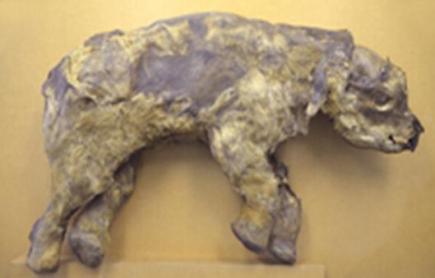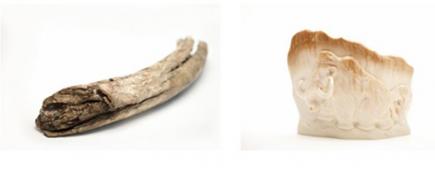A 42,000-year-old baby mammoth is making the trek from Russia to Manchester Museum for the UK’s first Siberian exhibit.
Masha, on loan from the Zoological Museum of the Russian Academy of Sciences, is a rare specimen and is preserved in permafrost.
She is estimated to have been between just one and three months old when she died and so only measures in at 135cm long and 67cm high.
Originally discovered in Yamal in 1988, Masha will visit Manchester Museum this October for the Siberia: At the Edge of the World exhibition.
Showcasing natural history specimens from the UK and Russia, the exhibition will give a fascinating insight into Siberian life, revealing a rich and varied picture of the vast, but little known, area.

MEET MASHA: Baby mammoth comes to Manchester Museum (Copyright of Zoological Museum, St Petersburg)
Dr Dmitri Logunov, Curator of Arthropods at Manchester Museum, is one of the two curators of the exhibit.
“We are really excited to bring the marvels of Siberia to the UK for the first time,” said Dr Logunov.
“Collaborating with museums from Russia has been a great opportunity to look beyond the stereotypical view and reveal the true Siberia.”
And Masha won’t be alone. A woolly mammoth model from London’s Natural History Museum will keep the immortalised infant company, along with mammoth tusks and carvings.
As well as mammoths, visitors will see an array of Siberian taxidermy, including reindeer, wolves, rare Siberian birds, even a brown bear, which was bought from Russia by Manchester Museum.
Stunning artefacts, rare objects and photographs will make up the rest of the exhibit, which is free for anyone to visit between October 2014 and March 2015. Hunting, fishing and everyday life of Siberians is explored through objects and portraits.

BONE-AFIDE ARTEFACTS: Mammoth tusks and carvings will be on show (Copyright Paul Cliff)
Director of Manchester Museum, Dr Nick Merriman, said: “This is a very special exhibition.
“It is the first time Siberian culture and environment has been on show in the UK and it includes some rare items, not least the preserved baby mammoth.”
From the exhibition, visitors can learn how Russian national identity has been shaped by the size, geographical position and natural resources of Siberia.
The rich mix of cultures, coupled with the ancient traditions of Siberia’s indigenous population, has developed a unique folklore, which is explored in the exhibit.
Also featured is Siberia’s notorious past as a place of exile for criminals, prisoners of war and political convicts, as well as everyday Siberian life.
In an area where the climate can swing from -50°C in the winter to 40°C in the summer, there exists a wide range of life, from the Arctic Circle, to the wilds of the Taiga forest, to the grassy plains of the Steppes.
Dr Merriman added: “This exhibition really shows the diversity of Siberia, and it is a fascinating insight into an area and cultures that we haven’t seen before.”
‘Siberia: At the Edge if the World’ will run from October 4 2014 until March 1 2015, in the Museum’s Temporary Exhibitions Gallery on Floor G. The exhibit will be open from 10am until 5pm.



